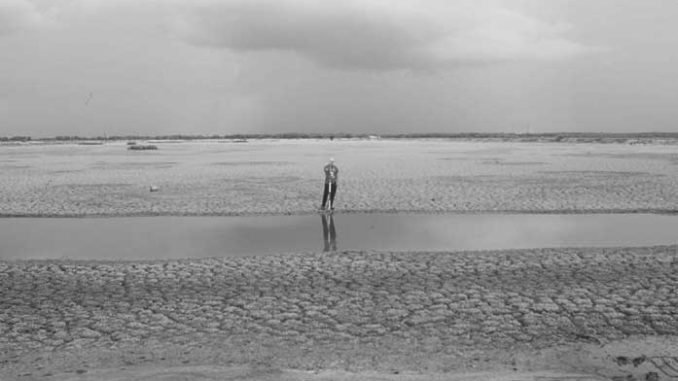
Considering how fast it’s disappearing, coastal Louisiana needs every bucket of dirt it can get to rebuild its wetlands. That’s why the dredging program associated with the maintenance of navigation channels is important to the restoration effort.
The New Orleans District (NOD) of the U.S. Army Corps of Engineers oversees the largest dredging program in the United States. In 2003, the NOD anticipated having the need to dredge more than 77 million cubic yards of sediment from various navigation channels. Most of that dredging was needed to maintain Southwest Pass of the Mississippi River and various deep-draft crossings on the river.
It would be great if all that dredged material could be used beneficially to create marsh. Seventy-seven million cubic yards of dredged material, if placed in shallow water and stacked to create wetland elevations, could create 10,000 to 15,000 acres of marsh every year.
Since we are currently losing about 24 square miles of marsh yearly (15,360 acres), such a use of dredged material could be a huge part of our wetland restoration toolbox.
Unfortunately, most of the dredged material can’t feasibly be used for marsh creation purposes. In the dredging of the Mississippi River, the NOD often uses hopper dredges or dustpan dredges that deposit the spoil in those portions of the river that tend to maintain their depth naturally.
Other impediments to the “beneficial” use of spoil include the presence of oyster leases or infrastructure (levees, highways, etc.) between the dredging area and desired disposal areas, and a term called the federal standard.
The federal standard is most simply defined as the least costly, engineeringly feasible alternative method of disposing of the dredged material. If a beneficial use plan exceeds that cost, someone other than the NOD is expected to either pay the entire added expense, or at least share in paying the cost.
Often, the Louisiana Department of Natural Resources (LDNR) has shared the extra cost of beneficial use with the NOD.
Where beneficial use options are available, the NOD tries hard to use those options and to remove minor impediments to their use.
Channels maintained by the NOD where spoil is commonly used beneficially include the Mississippi River-Gulf Outlet (MRGO), Southwest Pass and Baptiste Collette of the Mississippi River, the Barataria Bay Waterway, the Houma Navigation Canal, the Atchafalaya River Ship Channel, the Mermentau River Ship Channel and the Calcasieu Ship Channel (CSC).
Beginning in the early 1990s, the NOD installed rock breakwaters along the northeastern shoreline of the upper reach of the MRGO. After that, spoil was pumped frequently into broken-marsh areas, petroleum access canals and open-water areas behind the breakwaters to create marsh elevations. Usually, these areas were allowed to revegetate naturally, which would generally require 2 to 3 years.
Anyone who has gone out of Breton Sound Marina into the MRGO has probably seen some of the beneficial-use sites.
In the lower reaches, spoil was placed behind the rock jetties at the mouth of the channel to create marsh elevations.
In the vicinity of Breton Island, the dredged material was used to create a feeder berm to allow the currents to wash sand onto Breton Island, or was placed directly on the island to plug tidal breaches that had resulted from the passage of storms.
In the Atchafalaya River delta, the NOD dredges 1 to 2 million cubic yards of spoil annually. Originally, the NOD stacked the material adjacent to the channel just about as high as they could. Such disposal efforts resulted in the creation of Big Island more than 20 years ago.
During recent years, at the request of the various agencies, the NOD has been pumping the dredged material into shallow-water areas far from the channel to create elevations suitable for the establishment of marsh.
Within a few short weeks following the creation of the spoil islands in the Atchafalaya Delta, vegetation begins to sprout and become established.
Dredged material placement also often improves habitat conditions in shallow-water areas adjacent to the spoil islands. There, as a result of the reduction in wave action and some shallowing of water bottoms, submerged aquatic vegetation often becomes established in dense stands, which provides extremely productive fish and waterfowl habitat.
Between the efforts of the NOD, a couple of wetland restoration projects constructed by NOAA Fisheries and LDNR under the Coastal Wetlands Planning, Protection and Restoration Act (CWPPRA), and natural delta-building processes, the Atchafalaya River delta has been changing pretty rapidly in recent years. As such, one needs to have an updated map or aerial photograph to easily get around in that area.
Out in Southwest Louisiana, the NOD has created a lot of wetland acreage in the vicinity of the Sabine National Wildlife Refuge using spoil dredged from the CSC.
Between 1983 and 2003, using funding from the NOD, LDNR and CWPPRA, more than 1,300 acres of marsh were created in shallow water on the Sabine National Wildlife Refuge and in the vicinity of Brown’s Lake just south of the Gulf Intracoastal Waterway.
These marsh creation areas were not planted with wetland vegetation, and have required 2 to 3 years to dewater and be colonized by wetland vegetation.
The ability to pump the material long distances helps to maintain commerce on the channel, as the upland disposal sites adjacent to the channel are almost out of capacity to hold dredged material. If there are no feasible disposal sites, the cost of maintaining the channel is prohibitive and the dredging won’t get done.
Combining all the channels being dredged, according to staff of the NOD, approximately 35 percent of the dredged material is being used beneficially. Since 1976, such uses of dredged material have created approximately 18,000 acres of wetland elevations and other important habitat. And while that acreage is relatively small compared to the 15,000+ acres we lose every year, every little bit helps.
Richard Hartman is the leader of the Louisiana Habitat Conservation Division of NOAA Fisheries.


